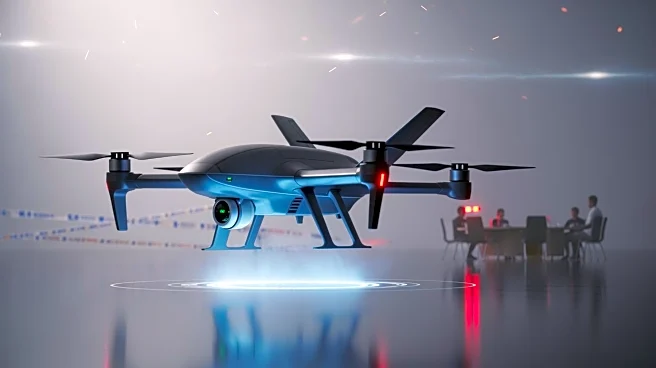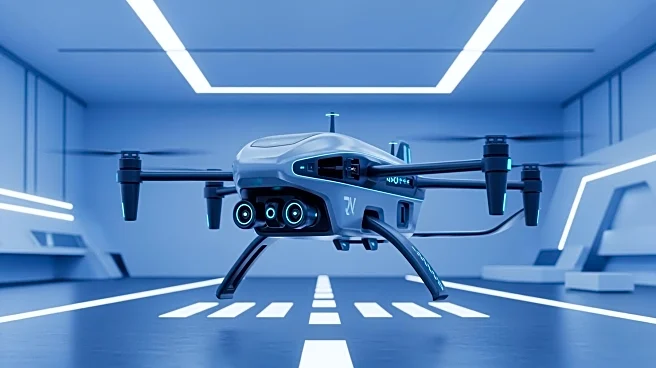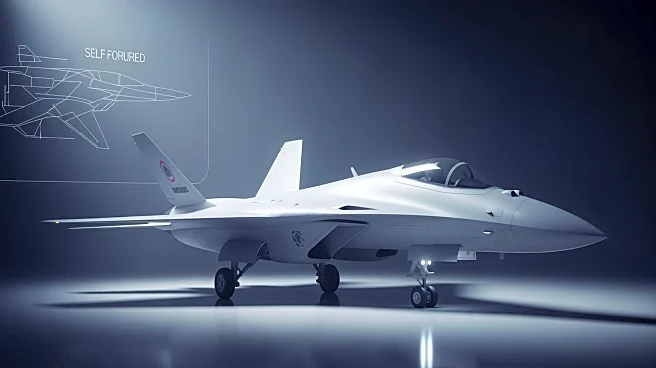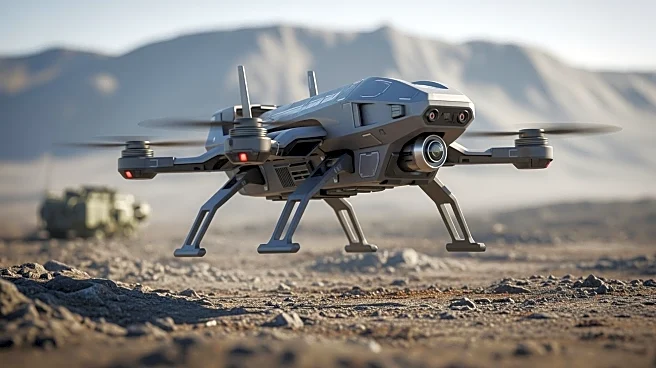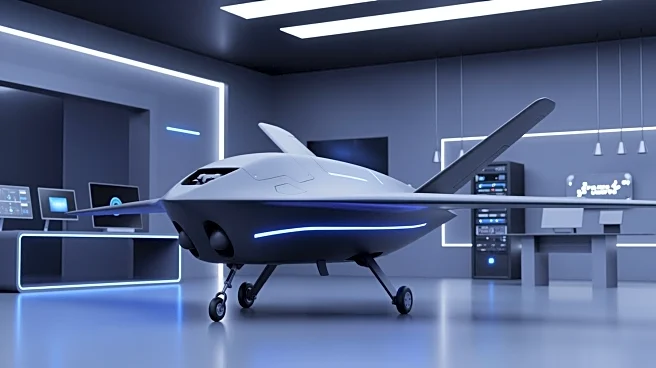What's Happening?
Shield AI has introduced its new unmanned fighter jet concept, the X-BAT, designed to function as either a drone wingman or a standalone aircraft. This development marks a significant step in autonomous military technology, with the X-BAT capable of vertical
takeoff and landing. The drone is equipped for strike, counter-air, and electronic warfare, as well as intelligence, surveillance, and reconnaissance missions. Shield AI has already achieved several milestones, including collaborations with the U.S. military and successful deployments of its V-BAT VTOL recon drones. The X-BAT is expected to undergo initial testing by fall 2026, with full flight tests planned for 2028.
Why It's Important?
The introduction of the X-BAT drone by Shield AI represents a significant advancement in military technology, potentially transforming U.S. defense strategies. The drone's ability to operate autonomously or collaboratively enhances military flexibility and operational efficiency. This development aligns with the U.S. military's shift towards unmanned systems, reducing reliance on traditional runway-reliant aircraft. The X-BAT's capabilities could provide the U.S. with a strategic advantage in modern warfare, particularly in scenarios where rapid deployment and adaptability are crucial. The collaboration with major defense contractors like Boeing and Lockheed Martin underscores the growing importance of autonomous systems in national defense.
What's Next?
Shield AI plans to continue testing and development of the X-BAT, with a focus on integrating it into current and future Air Force and Navy concepts. The company aims to secure contracts with the U.S. military, potentially influencing future defense procurement strategies. As the U.S. military continues to explore collaborative combat aircraft, the X-BAT could play a pivotal role in shaping the future of aerial warfare. The competition among defense contractors to develop advanced unmanned systems is likely to intensify, driving further innovation in the field.
